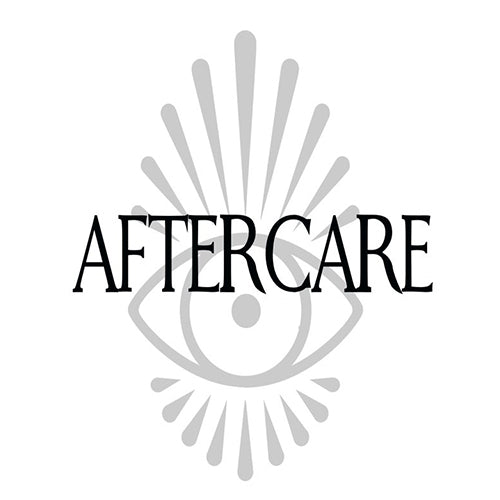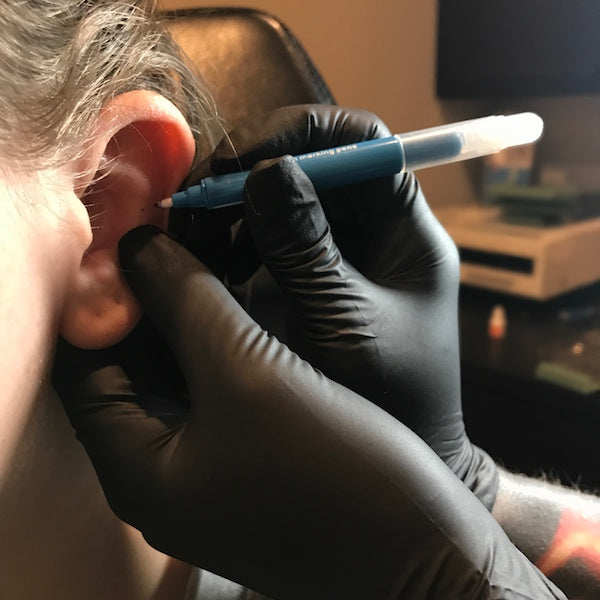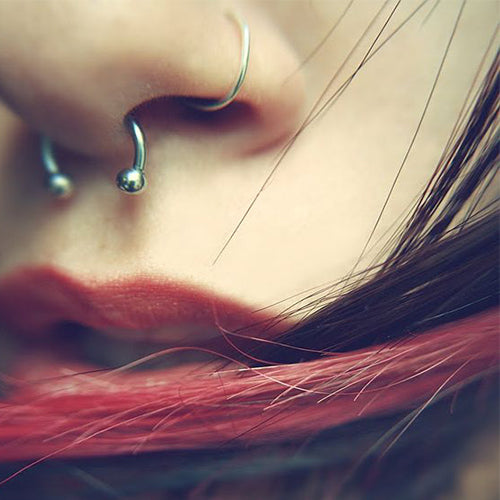
How to Clean a Body Piercing

- Avoid touching on or around a piercing for at least 24 hours after you get it.
Even after those 24 hours are over, you should always wash your hands before touching your piercing. Foreign substances like dirt and hand oil can aggravate the healing process and eventually lead to infection. In fact, you should avoid touching your piercing at all times except cleaning

- Know the signs of normal healing.
While it's good to be extra cautious, knowing the signs of normal healing will help ease your mind about infection and will keep you from over-cleaning your new piercing. Here are a couple of symptoms that are part of the normal healing process
Bleeding, swelling, tenderness, and bruising. Small amounts of bleeding and localized swelling are expected right after you get a new piercing. These can often also lead to tenderness and bruising. While these four things are normal in moderation, call your piercer if they are excessive or if the bleeding and bruising continue for more than a week after you get your new piercing (Be aware that genital piercings may bleed freely for the first few days).
Itching and discoloration. Itching is common in any healing process, partly because of new skin growth. Although your piercing will be itchy try to refrain from scratching it as you could hurt yourself more. Discoloration can often be caused by a whitish-yellow fluid secreted from the piercing. This is called lymph and is nothing to be worried about. However, if you start to notice pus around the piercing you should call your piercer immediately.

- Choose your approved aftercare routine.
Most professional piercers recommend sea salt soaks once or twice a day for several weeks after the piercing.If you find the method you are using is starting to irritate the skin around the piercing, ask your piercer about other methods.
The saline soak will be easier with some piercings than with others. For lobes, just submerge the piercing in a cup of warm salt water. For belly button piercings, quickly flip a small cup of saline solution upside down over the piercing to create a vacuum for the piecing to soak in. For most other piercings, it's effective to saturate clean gauze or paper towels with the solution and then apply to the piercing.
Make sure the solution gets all the way in the piercing, not just around it. Though you don't want to rotate the jewelry, you do want to get close enough to the jewelry to ensure the saline solution is getting all the way in the hole. Otherwise, you risk infection inside the piercing.
Use a pressurized can of saline solution. This can be used instead of or in addition to the saline soak; ask your piercer for the benefits of each. Blairex is the most common pressurized saline solution out there and can be purchased from any drug stores.
Some people choose to wash the piercing with warm water and a gentle soap as well. If you decide to do this, soap no more than one to two times a day. The best way to use soap to clean your piercing is in the shower: use a pearl sized squirt of mild soap and gently clean the piercing. Rinse the soap off after 15 to 30 seconds.
Avoid harmful techniques and products. There are some cleaning techniques that should be avoided, even if they sound like a good idea to you.
Over-cleaning. Believe it or not, you can over-clean your piercing. Limit your cleaning routine to twice a day to avoid irritation and dryness.
Harsh soaps and anti-bacterial products. Dial, Betadine, Hibiclens, and hydrogen peroxide can all damage your healing cells and dry out the piercing, encouraging crusty buildup. Rubbing alcohol should be avoided for the same reason.
Ointments. Healing ointments restrict necessary airflow and will delay the healing process of your piercing.

- Get rid of crusties.
A clear, yellowish fluid (lymph) will come out of the piercing as part of the healing process.Without daily cleanings, this fluid will crust around the piercing, creating unnecessary tension. Be sure to gently clean these off periodically by soaking a towel or Q-Tip in the saline solution and gently rubbing the area. Never force the crusties off.
If you use a Q-Tip or cotton bud, make sure it is fully saturated, and there are no loose fibers to get caught in your piercing. If you do get fibers in your piercing, remove them immediately to avoid irritation. Avoid using cotton balls. Never remove crusties with your fingers—unnecessary touching can lead to infection.

5、Shower to help clean your piercing.
Showering can also help - direct water stream can help to loosen crusties/remove dirt. Be careful with surrounding area, and talk to your piercer about what kind of soap and shampoo to use in the shower.
Avoid taking baths for the first few weeks after getting your piercing. Baths and bathtubs tend to harbor bacteria that can get trapped in your piercing and cause infection. If you must take a bath, clean the tub well before you get in. Rinse and clean your piercing when you get out.

6、Mitigate trauma to the area.
Never touch or play with your piercing outside of cleaning it. Avoid friction/rough play, oral contact, and contact with other's bodily fluids. If a body piercing, wear loose-fitting clothing over it until healed. If on the ears, wear hair in a way that it will not get caught on the piercing

7、Keep away from dirty bodies of water.
Lakes, pools, hot tubs, and other possibly harmful bodies of water should be avoided until your piercing is healed. Like bath tubs, these harbor bacteria that can encourage infections in your piercing.If you have to swim, find a waterproof bandage such as Nexcare Clean Seals.

8、Be patient.
Remember that piercings heal from the outside in. Therefore, a piercing may seem healed before it is. Removing or changing the jewelry can cause tearing inside the piercing, forcing you to restart the healing process.
Never force your jewelry. If you fail to clean every day, smelly secretions may build up inside the piercing, making it hard to move the jewelry. Instead of forcing it, which may cause inner breakage of the healed skin, continue cleaning until you can easily remove the piercing.

9、Sleep on clean bedding.
Be extra vigilant about changing your sheets and pillowcases. Always wear clean and breathable clothing when you sleep. Allowing airflow will help bring oxygen to the piercing, thus helping the wound heal healthily and quickly.

10、Stay healthy.
As with any wound, the healing process will happen faster if your body isn't working to fight other problems or infections. Thus, keeping yourself and your body happy and healthy will help keep your piercing happy and healthy.
Exercise. With some exceptions, exercise is fine during the healing process. Be sure to clean any sweat that may accumulate in the piercing, and listen to your body.
Avoid excessive recreational drug use. This includes nicotine, alcohol, and caffeine.
Avoid stress. Too much stress in your life will also cause stress on your body, slowing the healing process.

11、Be on the lookout for signs of an infection.
Expect your healed piercing to seem healthy and happy every day, unless it was bumped or pulled on or has had some accident. If you experience pain, swelling, or discharge it is important to contact your piercer or you will be at risk or losing your piercing or causing damage to your body.



1 comment
thanks very much for this tips, they’re very educating. i think more people should be reaing stuffs like this, especially those who really love having piercings on.
Jackson Fuller
Leave a comment
This site is protected by hCaptcha and the hCaptcha Privacy Policy and Terms of Service apply.